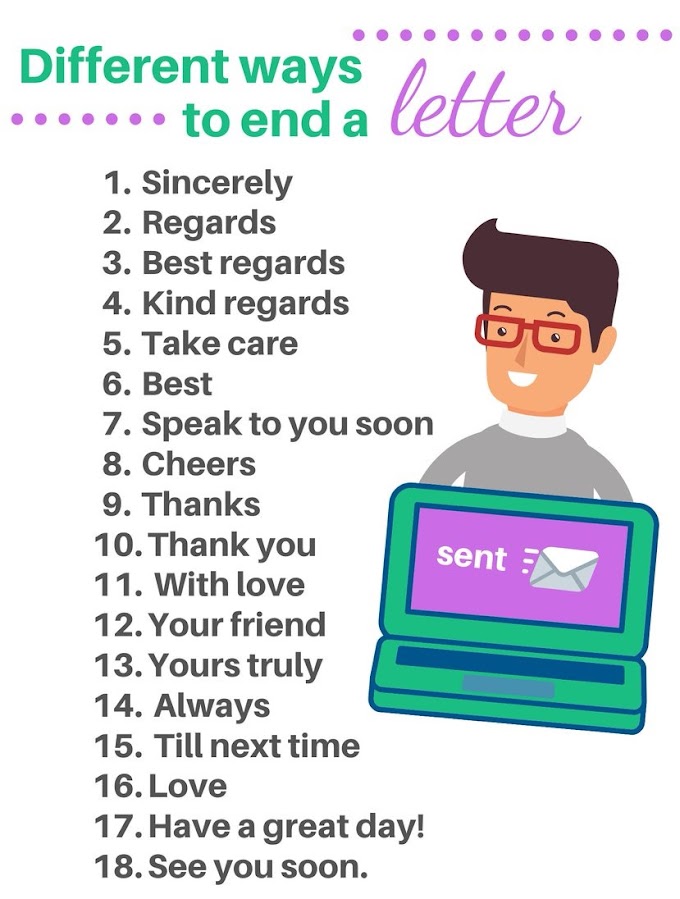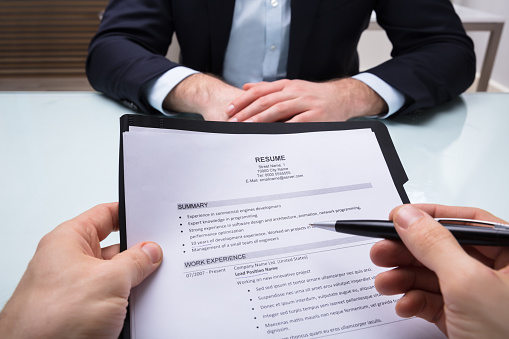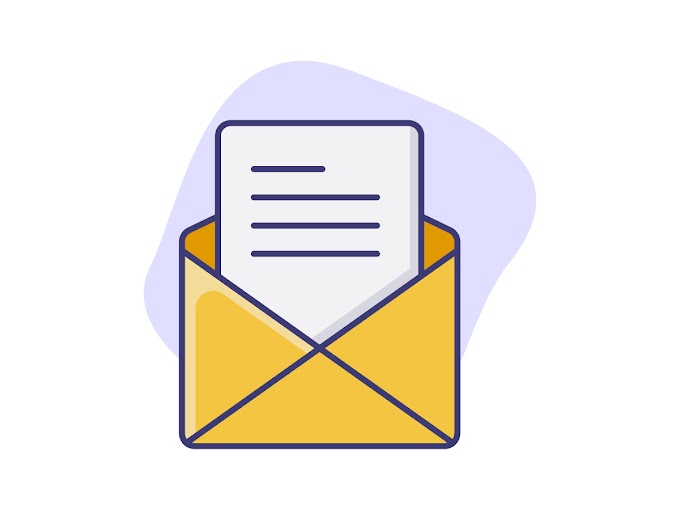How you end a business letter is important. It’s your last chance to make a good first impression on your reader. Choose the wrong closing, and you might damage the goodwill you have built up in the rest of your communication.
What’s the best way to end a letter or email message? Your closing needs to leave the reader with positive feelings about you and the letter you have written.
📝 NOTE: In closing your letter, it is important to use an appropriately respectful and professional word or phrase.
Most formal letter closing options are reserved, but note that there are degrees of warmth and familiarity among the options. Your relationship with the person to whom you’re writing will shape which closing you choose:
- If you don’t know the individual to whom you’re writing, stick with a professional formal closing.
- If you’re writing to a colleague, business connection, or someone else you know well, it’s fine to close your letter less formally.
Above all, your closing should be appropriate. Choose the right letter closing, and your reader likely won’t remember how you ended your letter. Ideally, your message will resonate instead of your word choice.
Review the best way to end a letter and examine formal, business, or personal letter closings, sample signatures, letter examples, and writing tips.
Business Letter Closing Examples
The following are letter closings that are appropriate for business and employment-related letters.
Sincerely, Regards, Yours truly, and Yours sincerely - These are the simplest and most useful letter closings to use in a formal business setting. These are appropriate in almost all instances and are excellent ways to close a cover letter or an inquiry.
Best regards, Cordially, and Yours respectfully - These letter closings fill the need for something slightly more personal. They are appropriate once you have some knowledge of the person to whom you are writing. You may have corresponded via email a few times, had a face-to-face or phone interview, or met at a networking event.
Warm regards, Best wishes, and With appreciation - These letter closings are also appropriate once you have some knowledge or connection to the person to whom you are writing. Because they can relate back to the content of the letter, they can give closure to the point of the letter. Only use these if they make sense with the content of your letter.
More Letter Closing Examples
When you’re ending your letter, be sure to choose a letter closing that is appropriate to the topic of your letter and to your personal situation and relationship with the person to whom you are writing. Here are more examples to choose from:
Best,
Cordially yours,
Fond regards,
In appreciation, In sympathy,
Kind regards, Kind thanks, Kind wishes,
Many thanks,
Regards, Respectfully, Respectfully yours,
Sincerely, Sincerely yours,
Stay well, Stay safe and well,
Thanks, Thank you, Thank you for your assistance in this matter, Thank you for your consideration, Thank you for your recommendation, Thank you for your time,
Warm regards, Warm wishes, Warmly,
With appreciation, With deepest sympathy, With gratitude, With sincere thanks, With sympathy,
Your help is greatly appreciated, Yours cordially, Yours faithfully, Yours sincerely,
Yours truly,
Letter Closings to Avoid
There are certain closings that you want to avoid in any business letter. Most of these are simply too informal. Some examples of closings to avoid are listed below:
Always, Cheers, Love, Take care, XOXO, Talk soon, See ya, Hugs
Some closings (such as “Love” and “XOXO”) imply a level of closeness that is not appropriate for a business letter.
Rule of thumb: if you would use the closing in a note to a close friend, it’s probably not suitable for business correspondence.
How to Capitalize a Closing
Capitalize the first word of your closing. If your closing is more than one word, capitalize the first word and use lowercase for the other words.
How to Format a Letter Ending
- Once you have chosen a word or phrase to use as a sendoff, follow it with a comma, some space, and then include your signature.
- If you are sending a hard copy letter, leave four lines of space between the closing and your typed name. Use this space to sign your name in ink.
- If you’re sending an email, leave one space between the complimentary close and your typed signature. Include your contact information directly below your typed signature.
What to Include in Your Signature
Beneath your letter closing, include your signature. If this is a physical letter, first sign your name in ink, and then list your typed signature below. If this is an email letter, simply add your typed signature below your sendoff.
❕ IMPORTANT: Make sure to include your contact information in your letter.
If this is a physical letter, your contact information will be at the top of the letter. However, if this is an email, include that information beneath your typed signature. This will allow the recipient to respond to you easily.
Signature Examples
SAMPLE
📝Hard Copy Letter Signature
Sincerely,
Handwritten Signature (for a printed letter)
Typed Signature
SAMPLE
📝Email Message Signature Example
Regards,
Typed Signature
Email Address
Phone
LinkedIn URL (if you have a profile)
Email Address
Phone
LinkedIn URL (if you have a profile)
Need Help Setting Up Your Signature?
Here’s how to set up your email signature, with a list of what to include in it and samples.
Review Letter Examples
These sample letters and emails use a variety of professional closings. Use them as a starting point for your own business and career-related correspondence.
Employment Letters
Review a variety of letter samples for job seekers, including cover letters, interview thank-you letters, follow-up letters, job acceptance and rejection letters, resignation letters, appreciation letters, and more employment letter samples.
Business Letters
New to writing business letters (or need a refresher)? These how-to’s and examples will help you with all your professional correspondence. Learn how to write business letters, review general business letter format and templates, and see employment-related business letter examples.
Email Messages
The majority of business correspondence now takes place over email. But just because it’s easier than ever to communicate with colleagues and prospective employers it doesn’t mean you can afford to come off as casual or unprofessional. Use these email message examples to format your professional email messages and make a good impression.





0 टिप्पणियाँ